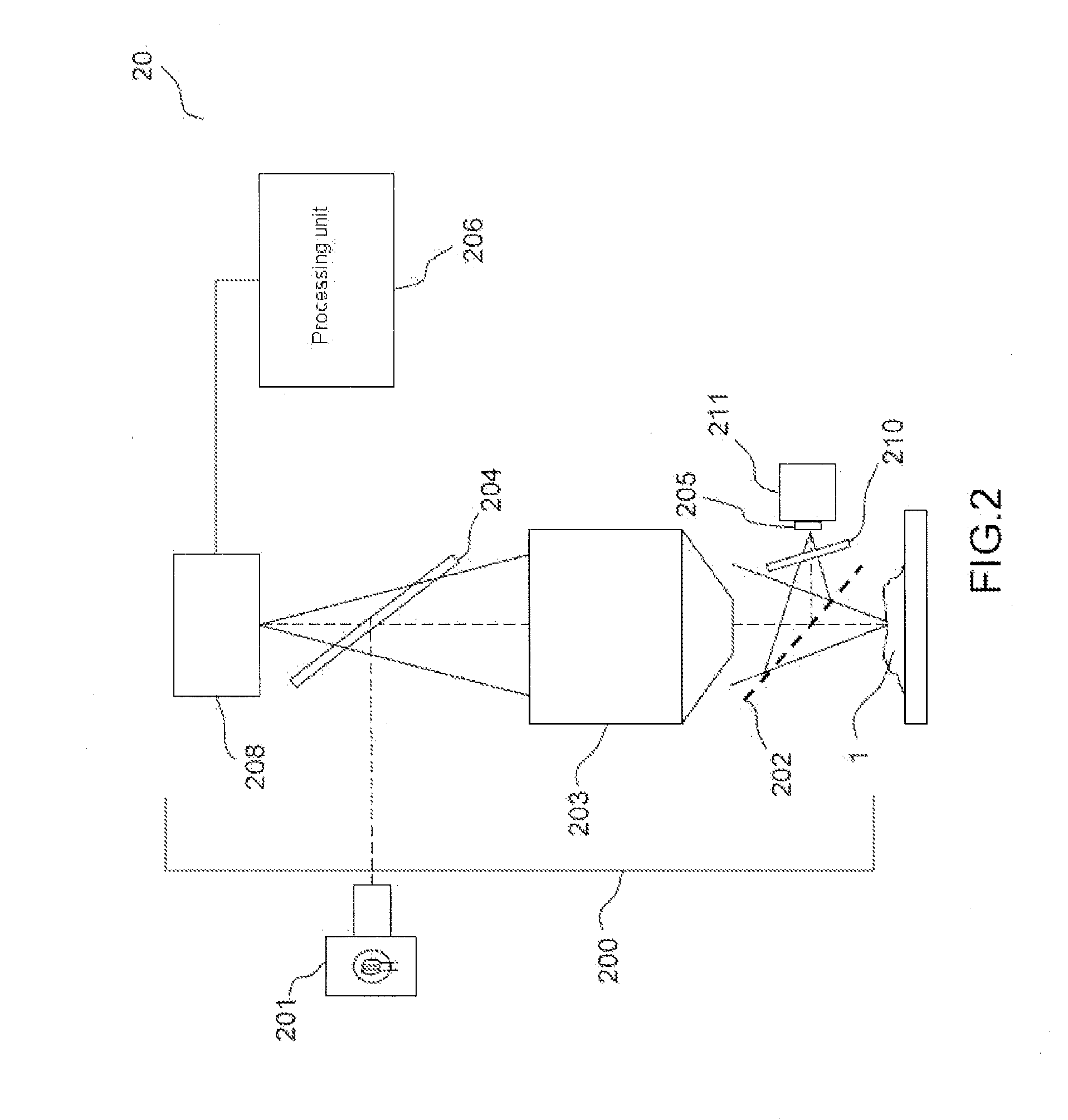Method and device for high resolution full field interference microscopy
a full-field interference, microscopy technology, applied in the direction of spectrum investigation, sensors, diagnostics, etc., can solve the problems of limiting the effective field of view, reducing the resolution of the cell, and proving it is more difficult to obtain in depth images of the optical section to a level of resolution
- Summary
- Abstract
- Description
- Claims
- Application Information
AI Technical Summary
Benefits of technology
Problems solved by technology
Method used
Image
Examples
Embodiment Construction
[0038]FIG. 2 represents a device 20 for three-dimensional imaging of a volumic and scattering sample 1 according to an exemplary embodiment of the invention. The sample is, for example, a biological tissue. It generally comprises an imaging interferometer 200 with variable magnification and a processing unit 206. In this example, the imaging interferometer has a Michelson-type configuration. It is illuminated by a source 201 with low spatial and temporal coherence, for example a halogen-type white-light source. The imaging interferometer 200 comprises a multichannel acquisition device 208, for example a CCD or CMOS camera, a first beam splitter element 204 that makes it possible to send into the interferometer the wave emitted by the source, a microscope objective 203, a second beam splitter element 202 for forming the two arms of the interferometers. The beam splitter element 202 is, for example, a pellicle beamsplitter in order to limit the geometric aberrations that may result fr...
PUM
 Login to View More
Login to View More Abstract
Description
Claims
Application Information
 Login to View More
Login to View More - R&D
- Intellectual Property
- Life Sciences
- Materials
- Tech Scout
- Unparalleled Data Quality
- Higher Quality Content
- 60% Fewer Hallucinations
Browse by: Latest US Patents, China's latest patents, Technical Efficacy Thesaurus, Application Domain, Technology Topic, Popular Technical Reports.
© 2025 PatSnap. All rights reserved.Legal|Privacy policy|Modern Slavery Act Transparency Statement|Sitemap|About US| Contact US: help@patsnap.com



